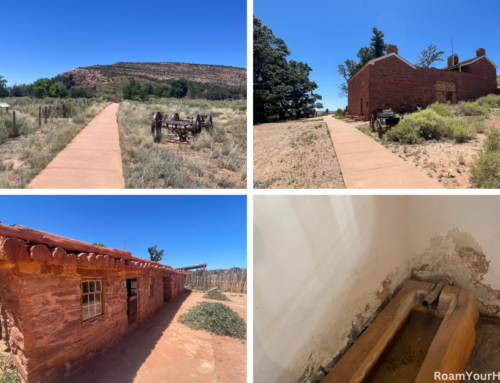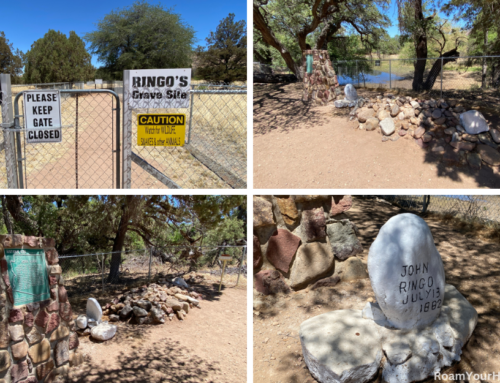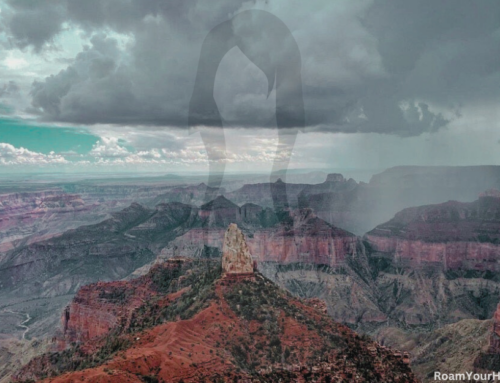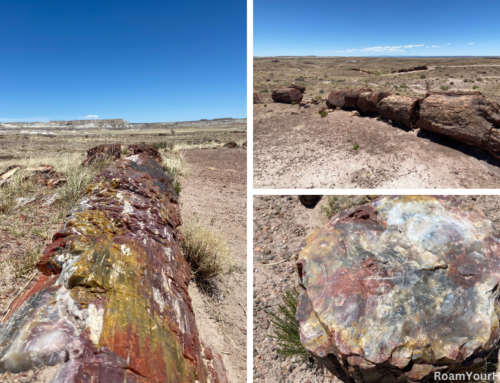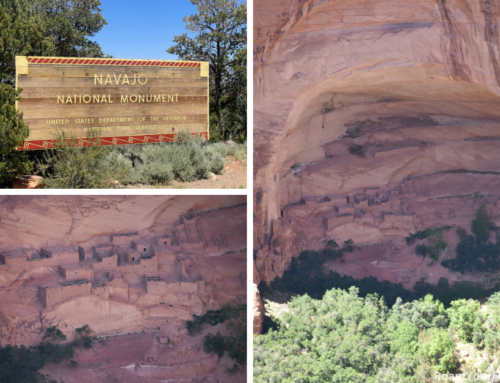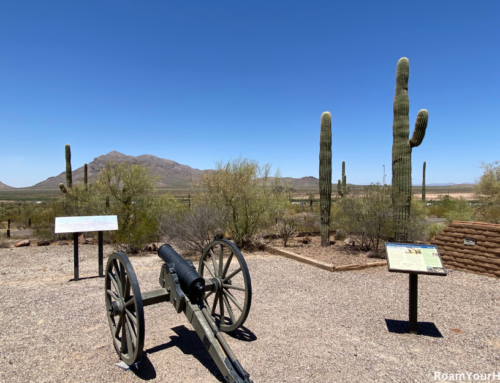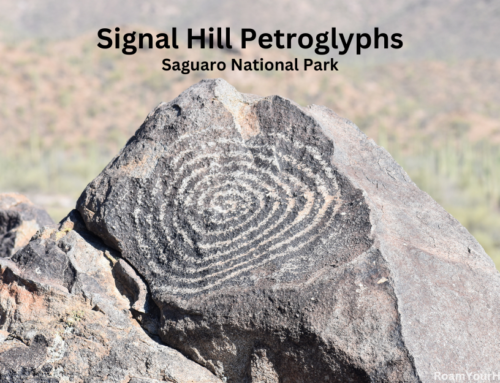
Casa Grande Ruins NM: Visitor’s Guide
Casa Grande Ruins National Monument protects the ancient ruins of an Ancestral Sonoran Desert People’s farming community. The park is about 55 miles southeast of Phoenix in Coolidge, Arizona.
My wife and I visited the ruins on a late spring afternoon while road-tripping through the desert southwest. We pulled into a nearly empty parking lot a little over an hour before they closed for the day.
The Visitor Center is quite impressive. It has a wide variety of informative exhibits and artifacts on display. After spending about 20 minutes checking out the VC we walked outside to check out the Casa Grande Ruins.

History of Casa Grande or the Big House
“Casa Grande” is Spanish for “big house,” which refers to the largest structure on the site. The Big House is the remnant of a four-story building that was abandoned sometime before or around 1450.
No one knows what the people who built the Casa Grande called themselves centuries ago. Archeologists refer to the Ancestral Sonoran Desert People as a part of the HOHOKAM culture, which flourished in the region from 1,500 to 550 years ago. The people who built it left no written documentation of its purpose. There are more questions than there are certainties when dealing with Casa Grande. Some of these include why the walls line up north-south-east-west. What is the purpose of the holes in the wall that allow you to observe the sun and moon? Were sacred ceremonies held here? It may be an influential family home. Or it could be a trading post along intricate farming communities and canal networks. The answer may be that Casa Grande has likely served many purposes throughout its history.
No one can know with certainty. The people who built it left written records behind. The first written historical accounts of the Casa Grande began with Jesuit missionary Padre Eusebio Francisco Kino, who visited the ruins in 1694. His journal entries describe the large ancient structure. He wrote the words “casa grande” (or “great house”), which are still used today.
Visiting the Casa Grande Ruins
In the late 1700s and early 1800s, only a few others knew about or visited the ruins. That number increased in 1879 when a railroad was built 19 miles away. Travelers and tourists took artifacts and often vandalized the ruins. In 1889, Congress voted to protect Casa Grande from further vandalism and looting. They voted to pay for clearing away debris and repairing the eroded foundations. The wooden beams and metal rods you can still see today were installed in 1891 to brace up some of the walls. The government made Casa Grande the nation’s first archeological preserve three years later. President Woodrow Wilson made Casa Grande Ruins a National Monument on August 3, 1918.
I noticed that the structure looked much the same as it did when it was made a national monument more than 100 years ago. A giant shelter built around it partially protects it from the elements.
Park rangers offer daily tours of the grounds and Great House during the cooler months of the year. No one is permitted inside the ruins, but you can still get tremendous views walking around them. During our visit, we missed the last guided tour of the day, so we decided to do a self-guided tour. Which is a short walk around the Casa Grande following wayside signs.
Plan on spending at least an hour at the monument and you could easily spend more if you have the time.

